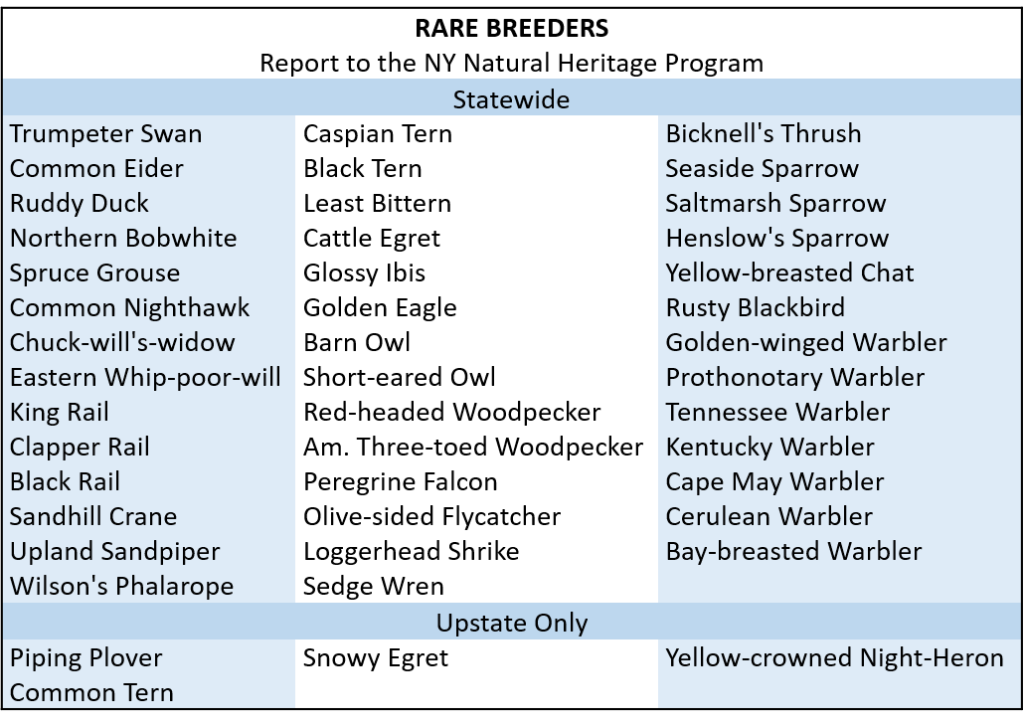This is a guest article by Hollie Shaw, the Zoology Data Supervisor for the NY Natural Heritage Program.
Finding a rare bird is an exciting event for many birders. We at the NY Natural Heritage Program are interested in your uncommon observations, too. Our program mission is to provide comprehensive information and scientific expertise on rare species and natural ecosystems to resource managers and other conservation partners. We maintain a database of thousands of locations throughout New York where at-risk species and habitats have been documented. The data are used in project review and conservation planning by the NYS DEC and other agencies.
Our program incorporates citizen science data, including from both previous atlases, into our database. The NY Breeding Bird Atlas III provides an invaluable opportunity for us to add new rare bird breeding locations to our database or to update records with the most recent breeding dates.
We were recently involved in a study concerning how citizen science can support regulatory review, the process where solar, wind, and other development projects are reviewed for their environmental impacts (Young et al. 2019). We reviewed 27,605 eBird records for six rare species in NY: Black Tern, Harlequin Duck (non-breeding), Red-headed Woodpecker, Seaside Sparrow, Upland Sandpiper, and Yellow-breasted Chat. Using these eBird reports we were able to add 27 new known locations used by these rare species, a 19% increase over existing records. The known area occupied by Seaside Sparrows more than doubled and we were able to estimate the range extent of Yellow-breasted Chat for the first time.
The continual flow of data coming into eBird is very important to our program because we can obtain data at a scale not possible with only our staff scientists. The most useful eBird records of the many thousands we combed through were those with evidence of breeding, meeting the criteria for Probable or Confirmed, but even quick observations during the breeding season can prove useful for conservation. Learn more about documenting your observations.
For NY BBA III, we ask that you help us and the birds by taking one important extra step. Please take the time to fill out a NYNHP Rare Species Report when you find any of the rare species on our list. When you fill out this form, you are giving us the most precise location possible along with specific breeding behavior observations that can aid in conservation and management planning.
Thank you for helping conserve New York’s rarest birds!

Young, B. E., N. Dodge, P. D. Hunt, M. Ormes, M. D. Schlesinger, and H. Y. Shaw. 2019. Using citizen science data to support conservation in environmental regulatory contexts. Biological Conservation 237: 57-62.



